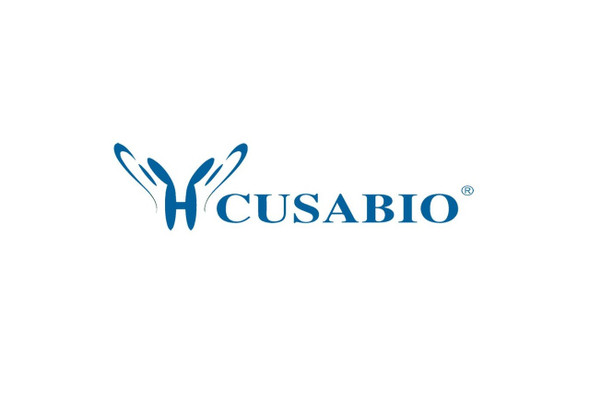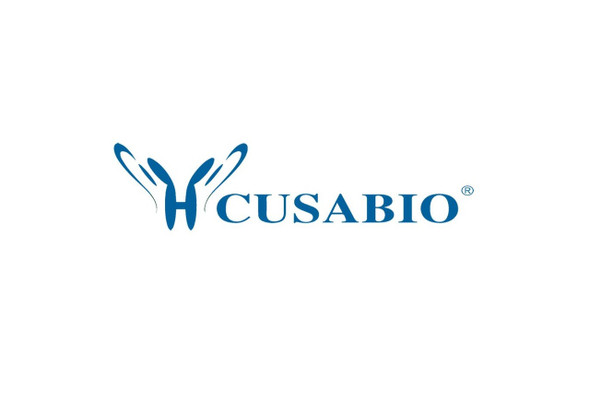Cusabio Human Recombinants
Recombinant Human Heterogeneous nuclear ribonucleoprotein L (HNRNPL) | CSB-EP010612HU(F1)
- SKU:
- CSB-EP010612HU(F1)
- Availability:
- 13 - 23 Working Days
Description
Recombinant Human Heterogeneous nuclear ribonucleoprotein L (HNRNPL) | CSB-EP010612HU(F1) | Cusabio
Alternative Name(s): D830027H13Rik; FLJ35509; Heterogeneous nuclear ribonucleoprotein L; hnRNP L; hnRNP-L; Hnrnpl; hnRPL; HNRPL_HUMAN; P/OKcl.14
Gene Names: HNRNPL
Research Areas: Epigenetics and Nuclear Signaling
Organism: Homo sapiens (Human)
AA Sequence: MSRRLLPRAEKRRRRLEQRQQPDEQRRRSGAMVKMAAAGGGGGGGRYYGGGSEGGRAPKRLKTDNAGDQHGGGGGGGGGAGAAGGGGGGENYDDPHKTPASPVVHIRGLIDGVVEADLVEALQEFGPISYVVVMPKKRQALVEFEDVLGACNAVNYAADNQIYIAGHPAFVNYSTSQKISRPGDSDDSRSVNSVLLFTILNPIYSITTDVLYTICNPCGPVQRIVIFRKNGVQAMVEFDSVQSAQRAKASLNGADIYSGCCTLKIEYAKPTRLNVFKNDQDTWDYTNPNLSGQGDPGSNPNKRQRQPPLLGDHPAEYGGPHGGYHSHYHDEGYGPPPPHYEGRRMGPPVGGHRRGPSRYGPQYGHPPPPPPPPEYGPHADSPVLMVYGLDQSKMNCDRVFNVFCLYGNVEKVKFMKSKPGAAMVEMADGYAVDRAITHLNNNFMFGQKLNVCVSKQPAIMPGQSYGLEDGSCSYKDFSESRNNRFSTPEQAAKNRIQHPSNVLHFFNAPLEVTEENFFEICDELGVKRPSSVKVFSGKSERSSSGLLEWESKSDALETLGFLNHYQMKNPNGPYPYTLKLCFSTAQHAS
Source: E.coli
Tag Info: N-terminal 6xHis-SUMO-tagged
Expression Region: 1-589aa
Sequence Info: Full Length
MW: 80.1 kDa
Purity: Greater than 90% as determined by SDS-PAGE.
Relevance: Splicing factor binding to exonic or intronic sites and acting as either an activator or repressor of exon inclusion. Exhibits a binding preference for CA-rich elents. Component of the heterogeneous nuclear ribonucleoprotein (hnRNP) complexes and associated with most nascent transcripts. Associates, together with APEX1, to the negative calcium responsive elent (nCaRE) B2 of the APEX2 promoter.
Reference: Complete sequencing and characterization of 21,243 full-length human cDNAs.Ota T., Suzuki Y., Nishikawa T., Otsuki T., Sugiyama T., Irie R., Wakamatsu A., Hayashi K., Sato H., Nagai K., Kimura K., Makita H., Sekine M., Obayashi M., Nishi T., Shibahara T., Tanaka T., Ishii S. , Yamamoto J., Saito K., Kawai Y., Isono Y., Nakamura Y., Nagahari K., Murakami K., Yasuda T., Iwayanagi T., Wagatsuma M., Shiratori A., Sudo H., Hosoiri T., Kaku Y., Kodaira H., Kondo H., Sugawara M., Takahashi M., Kanda K., Yokoi T., Furuya T., Kikkawa E., Omura Y., Abe K., Kamihara K., Katsuta N., Sato K., Tanikawa M., Yamazaki M., Ninomiya K., Ishibashi T., Yamashita H., Murakawa K., Fujimori K., Tanai H., Kimata M., Watanabe M., Hiraoka S., Chiba Y., Ishida S., Ono Y., Takiguchi S., Watanabe S., Yosida M., Hotuta T., Kusano J., Kanehori K., Takahashi-Fujii A., Hara H., Tanase T.-O., Nomura Y., Togiya S., Komai F., Hara R., Takeuchi K., Arita M., Imose N., Musashino K., Yuuki H., Oshima A., Sasaki N., Aotsuka S., Yoshikawa Y., Matsunawa H., Ichihara T., Shiohata N., Sano S., Moriya S., Momiyama H., Satoh N., Takami S., Terashima Y., Suzuki O., Nakagawa S., Senoh A., Mizoguchi H., Goto Y., Shimizu F., Wakebe H., Hishigaki H., Watanabe T., Sugiyama A., Takemoto M., Kawakami B., Yamazaki M., Watanabe K., Kumagai A., Itakura S., Fukuzumi Y., Fujimori Y., Komiyama M., Tashiro H., Tanigami A., Fujiwara T., Ono T., Yamada K., Fujii Y., Ozaki K., Hirao M., Ohmori Y., Kawabata A., Hikiji T., Kobatake N., Inagaki H., Ikema Y., Okamoto S., Okitani R., Kawakami T., Noguchi S., Itoh T., Shigeta K., Senba T., Matsumura K., Nakajima Y., Mizuno T., Morinaga M., Sasaki M., Togashi T., Oyama M., Hata H., Watanabe M., Komatsu T., Mizushima-Sugano J., Satoh T., Shirai Y., Takahashi Y., Nakagawa K., Okumura K., Nagase T., Nomura N., Kikuchi H., Masuho Y., Yamashita R., Nakai K., Yada T., Nakamura Y., Ohara O., Isogai T., Sugano S.Nat. Genet. 36:40-45(2004)
Storage: The shelf life is related to many factors, storage state, buffer ingredients, storage temperature and the stability of the protein itself. Generally, the shelf life of liquid form is 6 months at -20?/-80?. The shelf life of lyophilized form is 12 months at -20?/-80?.
Notes: Repeated freezing and thawing is not recommended. Store working aliquots at 4? for up to one week.
Function: Splicing factor binding to exonic or intronic sites and acting as either an activator or repressor of exon inclusion. Exhibits a binding preference for CA-rich elements
Involvement in disease:
Subcellular Location: Nucleus, nucleoplasm, Cytoplasm
Protein Families:
Tissue Specificity:
Paythway:
Form: Liquid or Lyophilized powder
Buffer: If the delivery form is liquid, the default storage buffer is Tris/PBS-based buffer, 5%-50% glycerol. If the delivery form is lyophilized powder, the buffer before lyophilization is Tris/PBS-based buffer, 6% Trehalose, pH 8.0.
Reconstitution: We recommend that this vial be briefly centrifuged prior to opening to bring the contents to the bottom. Please reconstitute protein in deionized sterile water to a concentration of 0.1-1.0 mg/mL.We recommend to add 5-50% of glycerol (final concentration) and aliquot for long-term storage at -20?/-80?. Our default final concentration of glycerol is 50%. Customers could use it as reference.
Uniprot ID: P14866
HGNC Database Link: HGNC
UniGene Database Link: UniGene
KEGG Database Link: KEGG
STRING Database Link: STRING
OMIM Database Link: OMIM


-SDS__40434.1638524124.jpg?c=1)

-SDS__40434.1638524124.jpg?c=1)




